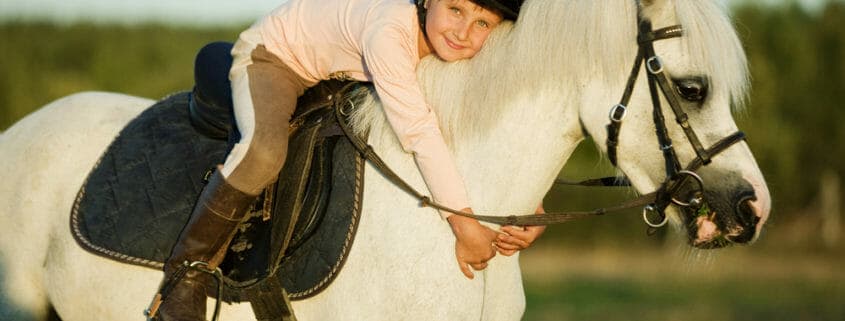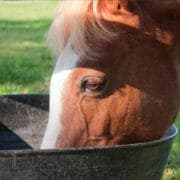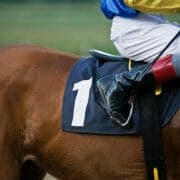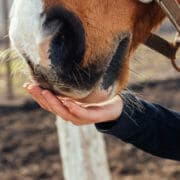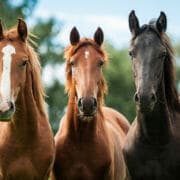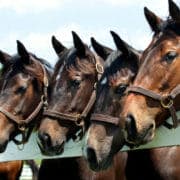Feeding the ‘Pony Club’ Mount
A good Pony Club mount is a precious commodity and they often require special care to keep them fit, healthy and active for as many years as possible. Sound nutrition should form the basis of this care. Pony Club mounts are also carrying an even more precious load, your children; and in this respect, temperament is everything. The following article gives you some tips on how to feed your Pony Club mount to keep them healthy and calm without costing yourself a fortune.
Tip #1 – Base the diet on forage
Diets that are based on good quality hay or pasture have many advantages. They keep horses calm, healthy and content, they are cost effective, and they reduce the risk of major diseases like colic. As a rule, your Pony Club mount should be fed a minimum of 2 kg/100 kg of bodyweight/day of hay or given free access to pasture (provided excess weight isn’t an issue).
If your Pony Club mounts are able to hold their condition on pasture or hay alone all you need to do is provide them with a good quality vitamin and mineral supplement and you will have a diet that keeps them happy, healthy and calm on a shoestring. FeedXL can help you to work out which supplement to use and what dose rate will work best.
If you find they can’t hold their weight on grass-based pasture or hay alone even when they are being fed as much as they can eat, try adding some lucerne/alfalfa hay to the diet. If this still isn’t enough you will need to add a complete feed suitable for Pony Club mounts to their diet.
Tip #2 – Use suitable complete feeds
Some feeds can affect a horse’s temperament, so if you do need to use a complete feed for your Pony Club mount choose carefully. If you have a mount that tends to get hot when fed higher energy feeds, look for a non-grain complete feed that provides cooler energy from fat and fiber sources (Tip: to make it easy to find these feeds when using FeedXL, tick ‘Grain Intolerant’ when filling in your horse’s details and the unsuitable feeds will be in red in the feeds list). Likewise, if your horse or pony is prone to laminitis, select feeds that contain no grain or grain by-product with a sugar and starch (NSC) content of less than 10 – 12% (again by ticking ‘Laminitis’ in your horse’s details in FeedXL, unsuitable feeds will be ‘red listed’ to help you steer clear of them).
If you have older mounts that are having trouble holding their weight or young horses that need extra energy, look for feeds that contain cooked and easy to digest grains and good quality protein.
Tip #3 – Don’t overfeed
Overfeeding will result either in an overweight horse or a hyperactive horse. One isn’t good for the horse, the other is certainly not good for its rider. When feeding your Pony Club mounts, feed them according to the work they are doing and their current body condition. Don’t be afraid to adjust the amount you feed on a daily basis according to if and how hard they were ridden that day and what their temperament or body condition is like.
For example, you might feed 2 kg of a complete feed on days your mount is ridden for at least an hour with 50% or more of this time being solid trot and canter work. On days that horse is not ridden, it might only be fed 0.5 kg of feed plus its hay or pasture. Condition score your mounts regularly and assess their temperament and adjust their feed according to whether they are gaining, holding or losing weight or whether they are feeling flat or a little hyperactive. For more on body scoring your horse, click here.
Tip #4 – Feed a balanced diet
Making sure all nutrient requirements including those for minerals and vitamins are met will keep your Pony Club mounts as healthy as possible. Common deficiencies of minerals like selenium can compromise a horse’s immune function, copper deficiency will lead to bleached coat colour and joint issues while a zinc deficiency will eventually lead to hoof problems. These nutrients are easily supplied in good quality vitamin and mineral supplements or well formulated complete feeds. Use FeedXL to assess if your mount’s requirements for these important nutrients are being met.
In Summary
Feeding the Pony Club mount should focus on keeping them healthy and active, yet calm. Feeding balanced diets based on forage and only using suitable feeds when needed will go a long way to achieving this goal. Adjusting the amount of any high energy feeds fed according to the horse’s workload, temperament and body condition will help to avoid excessive weight gain and hyperactive behaviour, while being sure to meet all vitamin and mineral requirements will keep hooves, skin, coats, muscles and joints healthy for as long as possible.
Do you have a question or comment? Do you need help with feeding?
We would love to welcome you to our FeedXL Horse Nutrition Facebook Group. Ask questions and have them answered by PhD and Masters qualified equine nutritionists and spend time with like-minded horse owners. It’s free!
Click here to join the FeedXL Horse Nutrition Facebook Group

